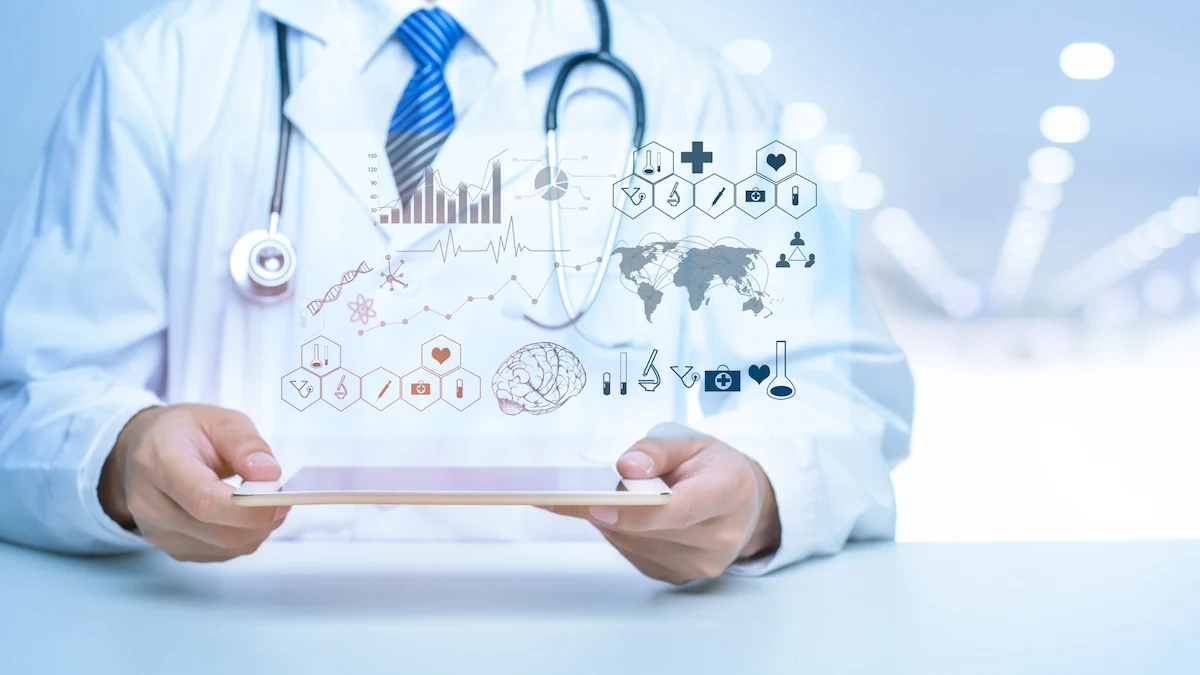The healthcare sector is undergoing a remarkable shift in today’s fast-paced digital world, and Electronic Health Records are at the center of this revolution. The management, access, and sharing of patient information have all been revolutionized by the advent of EHR. The importance of EHR in contemporary healthcare and its influence on the development of medical practices are discussed in this article.
Introduction
EHR technology has been instrumental in redefining how patient information is managed and accessed in the continually changing healthcare sector. The introduction of Electronic Health Records is one of the most important breakthroughs in this area. EHR has completely changed how healthcare professionals gather, store, and communicate patient data, resulting in more effective and individualized patient treatment. This article will examine the world of electronic health records, including its advantages, difficulties, and potential.
Understanding EHR A New Era of Digital Health Records
Electronic health records, or EHRs, are comprehensive digital database that contains information about a patient’s medical history, diagnoses, treatments, drugs, and more. It is securely preserved in electronic databases as opposed to conventional paper records, making it available to authorized healthcare providers over a secure network. Healthcare systems that are more effective, integrated, and patient-focused are now possible thanks to the switch to EHR.
 The Advantages of EHR in Modern Healthcare
The Advantages of EHR in Modern Healthcare
The extensive use of it has brought forth a variety of benefits that have changed the face of contemporary healthcare.
Enhanced Patient Care
A patient’s whole medical history is instantly accessible to healthcare professionals thanks to EHR, enabling them to make more precise diagnoses and create individualized treatment programs. Better patient care and healthier outcomes follow from this.
Streamlined Healthcare Processes
Healthcare facilities can abandon laborious paper-based record-keeping with EHR. This improves productivity, streamlines administrative processes, and frees healthcare personnel to concentrate more on engaging with patients and providing treatment.
Secure Data Sharing
The secure and easy sharing of patient data across various healthcare providers is made possible by EHR systems. This encourages cooperation and guarantees that all parties involved in a patient’s care have access to the most recent medical information.
Real-time Decision Support
Decision support tools are frequently included with EHR systems and give medical practitioners pertinent clinical information, alerts, and reminders. Making timely and educated judgments is made easier with the help of these tools, improving patient safety.
Patient Engagement
Patient portals are available in some of the systems, giving users access to their health records, test results, and appointment schedules. This increases patient engagement and active participation in the management of their health.
The Journey of EHR From Inception to Advancement
Although the idea of an EHR dates back to the late 1960s, its actual use just really took off in the twenty-first century. It initially encountered difficulties with interoperability, data security, and opposition to change. Regulations were formed as technology advanced to solve these issues, which sparked the creation of increasingly advanced systems.
Currently, as healthcare institutions embrace digital transformation, It usage is growing on a global scale. Further highlighting the value of in enabling telemedicine and distant healthcare services and maintaining continuity of care in trying circumstances is the COVID-19 pandemic.
Challenges and Solutions in EHR Implementation
Although It has many advantages, it might be difficult to adapt successfully. Typical problems include:
Cost and Financial Investment
It system implementation can require a sizable upfront cost, particularly for smaller healthcare organizations. However, the cost reductions and long-term advantages make the investment acceptable.
Data Interoperability
It is still difficult to ensure seamless data sharing between various EHR systems and healthcare providers. To solve this problem, interoperability standards and data-sharing methods must be established.
Data Privacy and Security
With the digitization of sensitive medical information, ensuring data privacy and security becomes a top priority. Healthcare providers must adhere to stringent data protection regulations and implement robust security measures.
The Future of EHR, Revolutionizing Healthcare Practices
Rapid technological breakthroughs and the demand for healthcare that is more patient-centric are two factors that are propelling the future with great potential.
Interconnected Healthcare Ecosystem
It platforms will integrate with wearables, remote monitoring tools, and telemedicine platforms as part of a wider, networked healthcare ecosystem to provide all-encompassing patient care.
Artificial Intelligence Integration
AI-powered It systems will analyze vast amounts of patient data to provide predictive insights, personalized treatment recommendations, and early disease detection.

Enhanced Population Health Management
Healthcare providers will be able to spot patterns, monitor health outcomes, and create focused interventions for particular populations thanks to the EHR, which will play a crucial part in population health management.
In Conclusion
Modern healthcare has undergone a transformation because of electronic health records, which have improved patient care by digitizing patient data and expediting procedures. The future of healthcare is bright as on continues to develop and integrate with cutting-edge technologies, resulting in more individualized, linked, and effective medical procedures.
FAQs
How do EHR systems ensure patient data privacy?
Its systems include stringent security controls, such as data encryption, access controls, and audit trails, to guard against hacking and unauthorized access to patient data.
Can EHR systems be customized to suit different healthcare specialties?
It is true that systems can be customized to match the particular requirements of various healthcare professions, ensuring that workflows and data gathering align with each field’s particular needs.


